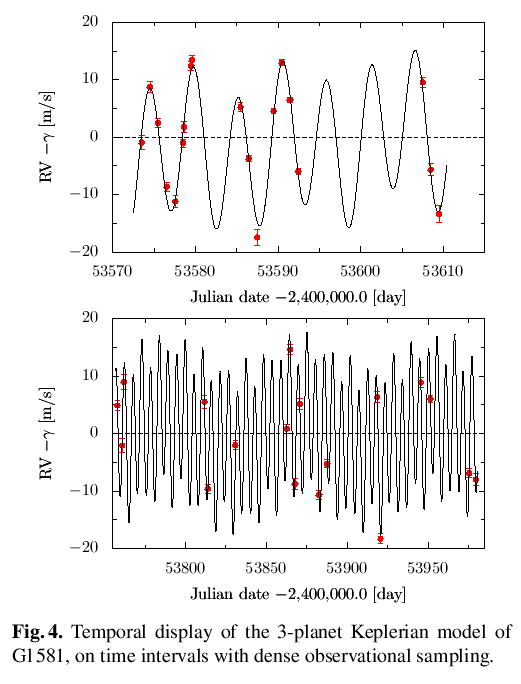
Astronomers have found hundreds of planets circling other stars. Most of them were found by the motions they induced in their host stars, using the radial velocity technique. Radial velocity measurements allow us to estimate a planet's mass.
On May 1, just a few days ago, the HARPS team announced that the system Gliese 581 contains not just one planet, but three. Here are the radial velocity measurements of the star over periods of about one month (top) and six months (bottom).

The overall wobble can be disentangled into three periodic signals: the radial velocity "wobbles" induced in the host star by each of three planets.
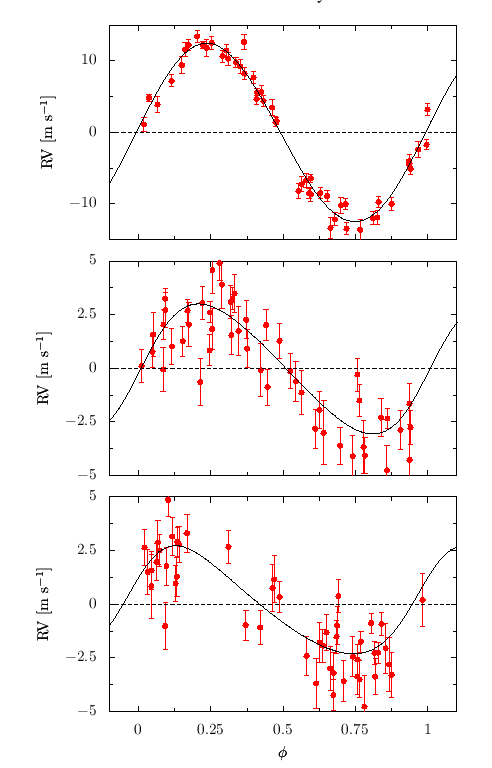
One of the three, corresponding to the bottom panel, is VERY interesting:
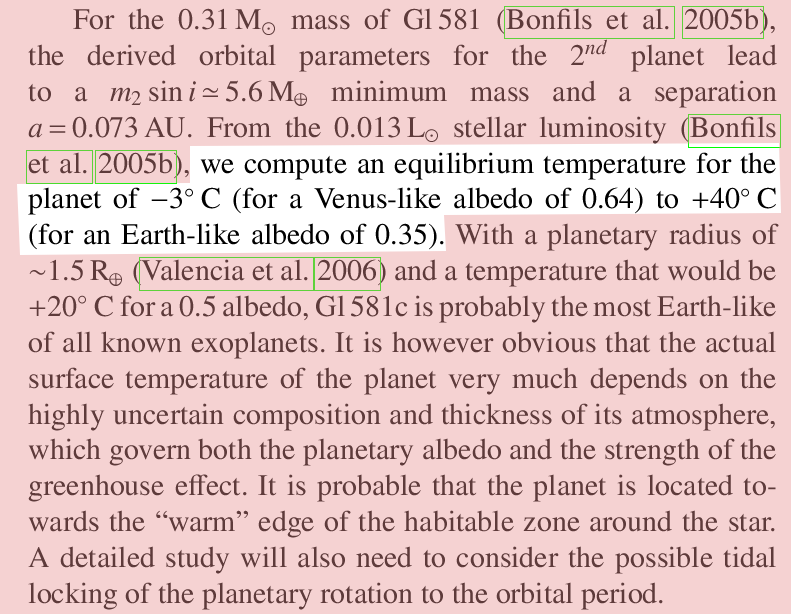
In the past few years, however, some planets have been found by another method: the transit technique. Transits by planets allow us to estimate the planet's radius.
In a few cases, we have measured both transits and radial velocity variations, so that we have rough measurements of the planet's size AND mass.
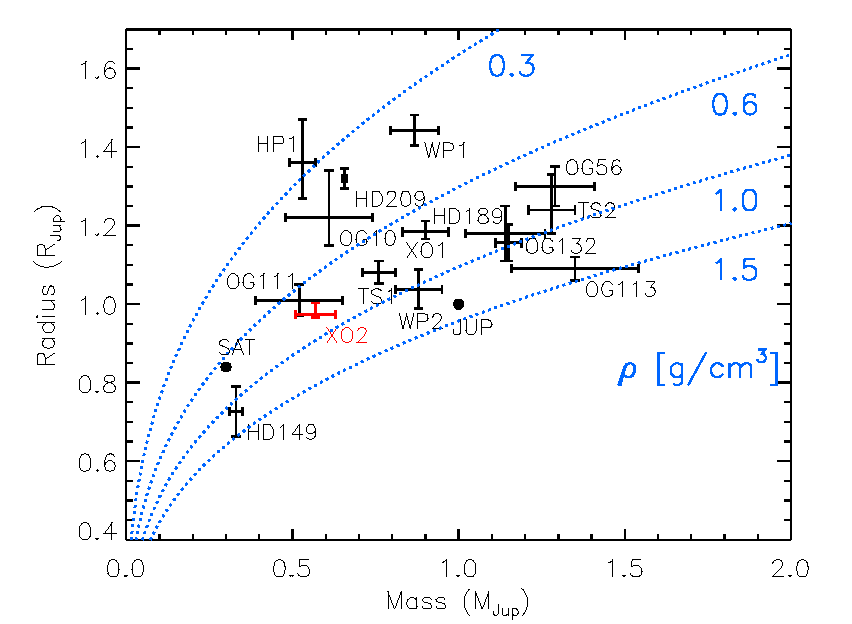
Figure 14 from Burke et al., astro-ph 0705.0003
The XO Team searches for planets around other stars by looking for little dips in the brightness of those stars during brief transits. This technique requires careful attention to detail and meticulous data reduction, but not a lot of light-gathering power. The XO survey telescopes are basically big telephoto camera lenses, with focal length 200 mm and focal ratio f/1.8.
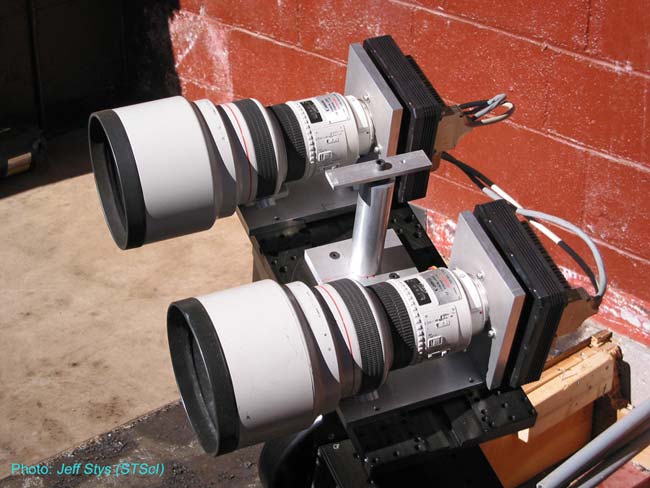
The planet designated XO-2 was discovered by the little dip in these photometric measurements, taken over a period of several years:
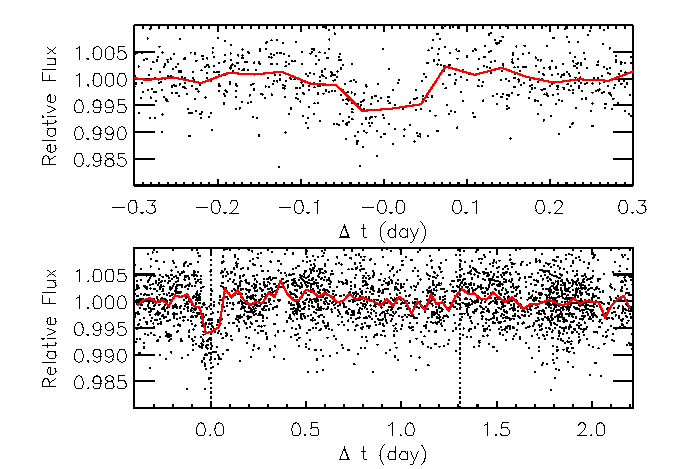
Once the XO team noticed the dip, they sent their followup team to confirm it, by taking pictures at predicted transit times with larger telescopes:
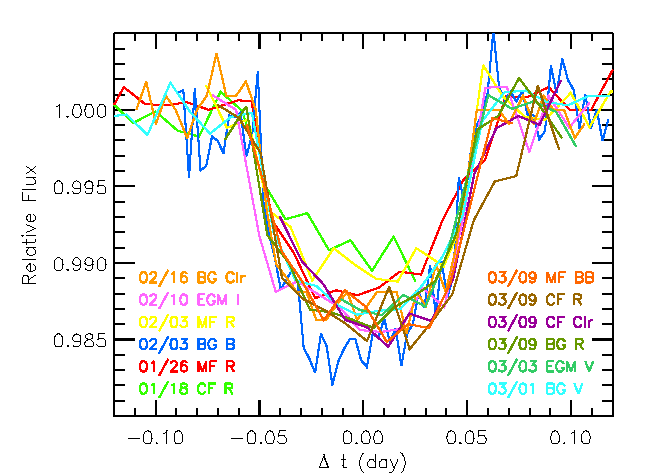
Some of the XO Extended Team members are
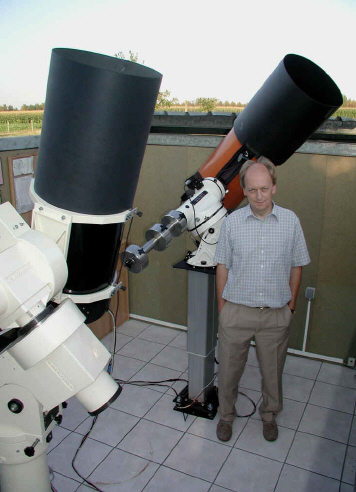

The COROT space telescope was launched on Dec 27, 2006. It is currently monitoring several small regions of the sky intensively from space. It's not very large: the telescope aperture is only about 10 inches in diameter.

The COROT team has just (May 3, 2007) put out a press release announcing their first transiting planetary discovery:
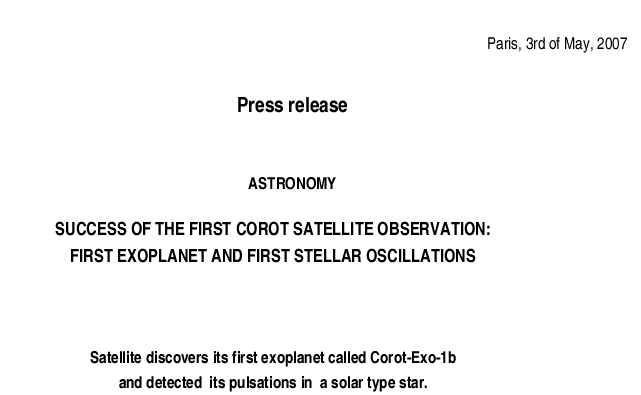
The light curve is impressively precise:
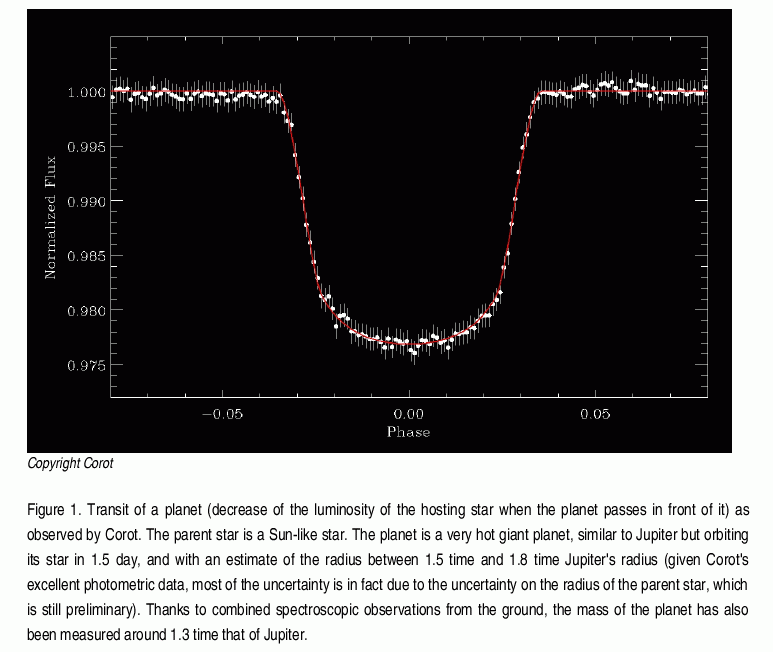
Alas, the COROT team has decided to keep the location of this system secret for the time being. Sigh.